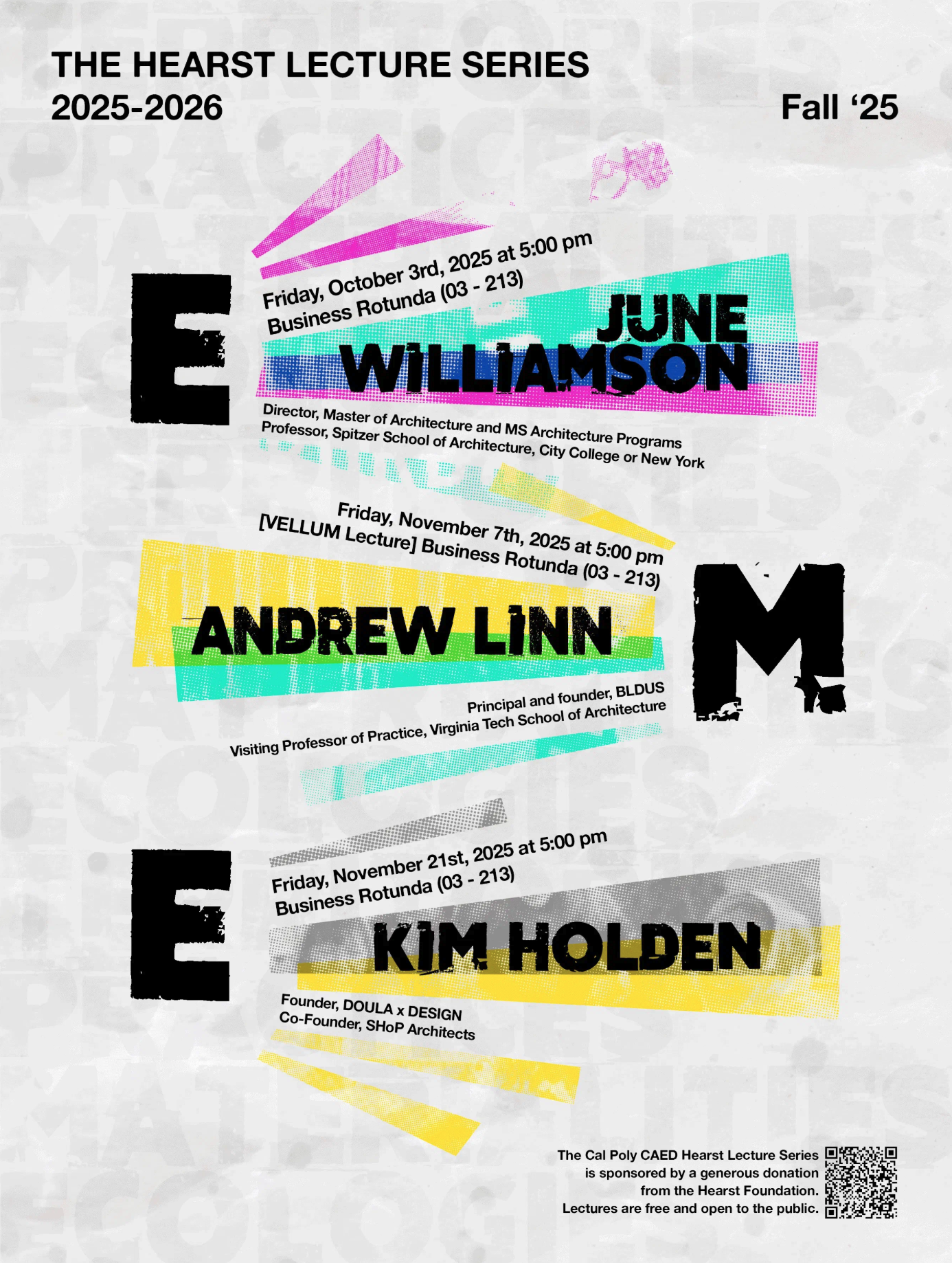The Built Environment at Cal Poly: The Early Years
By Grace Burnite (Business Administration ’21)
Cal Poly has built its reputation on the idea of engaging students in the work of Learn by Doing and the built environment — a mission that continues nearly 120 years later.
When the California Polytechnic School opened to students in the fall of 1903, this work was a key part of their vocational training. Students learned as they helped build some of the earliest campus buildings and designed the landscape as part of their core curriculum.
The College of Architecture and Environmental Design is the product of more than a century’s worth of design work at Cal Poly and the 75 year-span from its early roots as a fledgling department to being a nationally acclaimed college. In celebration of that upcoming anniversary, we look back on our humble beginnings and recognize that our education in shaping the built environment started with these Learn by Doing experiences.
From the Ground Up
Cal Poly began as a vocational school, where male and female students went to learn agricultural, mechanical and domestic trades. Part of their training literally involved building the campus.
|
|
(All photos courtesy of the Kennedy Library Cal Poly Special Collections and Archives.)
During the first school year of classes at Cal Poly in 1903-04, students helped construct a poultry house and the forging shop. Carpentry students completed all of the framing, including the roof trusses.
In 1905, carpentry students also helped construct a large barn designed by architect William Henry Weeks, a prolific California architect who also designed the three main campus buildings as well as 22 Carnegie libraries including still-standing structures in Paso Robles and San Luis Obispo, now home to the History Center of San Luis Obispo County.
|
|
In the later years of the Great Depression, the National Youth Administration worked with Cal Poly to establish a program for students in financial need by creating job opportunities related to students’ majors. These students helped build poultry units and brooder houses, concrete retaining walls, and worked on plumbing and electrical projects.
These experiences became the foundation for the architectural engineering, architecture and construction management programs that were later established within the College of Architecture and Environmental Design.
|
|
Shaping the Land
During Cal Poly’s first year of operation, all male students took the same classes: horticulture, gardening, road-making, carpentry, masonry, drawing, soils and plant study, and commercial arithmetic — regardless of whether they were enrolled in the agriculture or mechanics programs.
Horticulture students could specialize in deciduous fruits, truck crops or landscape gardening. Their projects usually centered around campus landscapes, which included installing lawns and assisting with the placement of plants, shrubs and trees. This field work included planting, spraying, pruning and caring for fruit trees and vines.
|
|
Between 1933 and 1934 students tended more than 80 acres of campus landscape, grew 73,200 flowering plants for campus use and raised 27,400 plants and shrubs for sale.
In 1939, horticulture students rebuilt the school nursery. From 1946-1950, horticulture students were paid to operate and maintain the college nursery and grounds. Today’s landscape architecture program continues to include horticultural studies that explore and work with specimens on campus.
|
|
Building the Tools
In the early years of the school, women enrolled in domestic science classes at Cal Poly. (Women students were barred from attending Cal Poly by legislative act in 1930, but returned to campus at the start of the 1956-57 school year.)
|
|
In addition to sewing and cooking, women would learn other household arts including dressmaking, house construction and furnishing, bookkeeping, home nursing and “sloyd” — the practice of making useful objects for the home, including tools, clothing and utensils.
In 1906, women enrolled in their first year learned to use tools as well as hands-on lessons in sawing, planing, chiseling, filing, boring and spokeshaving. In addition, the sloyd coursework taught women how to construct useful household articles and provided instruction in paper work and cardboard construction.
Women in their second year learned about chip carving and practiced using Florentine bent iron in combination with wood. At the end of the course, students were required to present models of their designs.
Women’s curricula also included courses in home management, specifically related to sanitation, home economics, house furnishing, home nursing and emergencies.
|
|
Stay tuned for future issues of Connections, where we will continue the story of our programs’ 75-year history.











